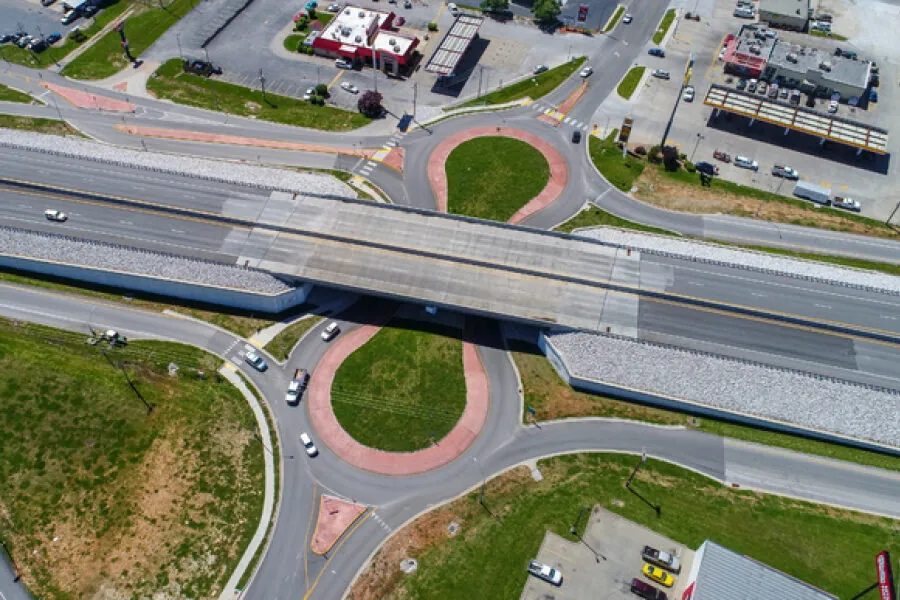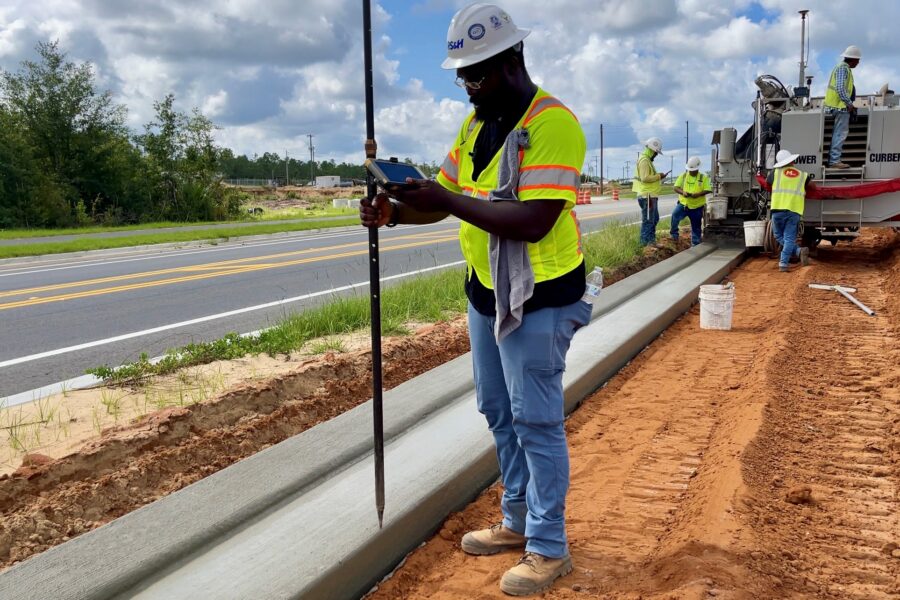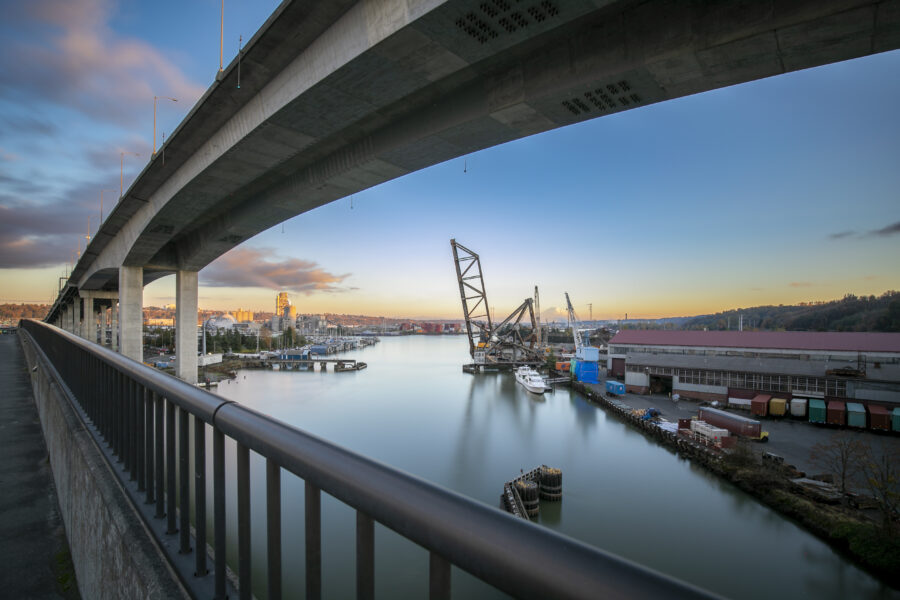How Progressive Design-Build Can Benefit Infrastructure Projects

Progressive Design-Build (PDB) has become extremely popular in select infrastructure markets. PDB currently represents much of the design-build market for water and wastewater projects, and its use is becoming ever more common in the aviation industry.
It’s worth examining why PDB has become popular in some of these segments, and if there are benefits that could translate to more transportation markets.
While aviation authorities, water and sewer authorities, and some cities and counties have used PDB, only a few DOT agencies have attempted to familiarize themselves with the process. A review of available records shows that only five DOT agencies have completed a PDB project, with only one of these agencies having experience with multiple PDB projects.
This is rapidly changing, as the movement to help educate DOT agencies and share information related to how PDB can be used to enhance their DB programs is well underway.
More than a dozen DOTs have expressed an interest in using progressive design-build over the coming year, with several already advancing procurement of one or more PDB projects. Several of these projects classify as mega projects.
Fortunately, organizations such as the Design-Build Institute of America (DBIA) have prepared specific guidance on PDB for the benefit of public agencies. But it will be important to apply peer-to-peer workshops and share lessons learned as this wave of PDB work advances.
Any reference to the use of design-build here addresses procurement models that espouse the DBIA’s Best Practices in Transportation. The DBIA Transportation Committee that I chair spent a great deal of time and effort orchestrating that document and we refer to it regularly. Upon creating these guidelines, DBIA adopted the term “Design-Build Done Right,” which is still used broadly today.
Let’s take a closer look at PDB and see how it compares to best-value design-build.
Best-Value Design-Build
Best-value design-build refers to a two-phase procurement where a formal qualifications submittal leads to a shortlisting of firms who are then required to present a technical proposal with a fixed price for a project based upon a set of preliminary bridging documents. A confidential process involving alternative technical concepts is used to help define the acceptable level of innovation that will be embraced and highly valued by the owner. In a variation of method, the price is fixed, and the scope is varied.
An adjusted score process is used to evaluate the best value based upon a weighted average for innovations and price combined. Stipends are paid to the losing teams to help offset their costs and allow the sharing of the information they provide.
The downside of best-value design-build, if there is one, is that it is expensive to undertake by the design-build teams, and the level of risk transfer can radically shift the burden onto the design-builder as well. This is sometimes the case on mega projects where unknowns, changed conditions and schedule impacts can surface easily.
Progressive Design-Build
Progressive design-build is a very different procurement model that can be streamlined to avoid the need to prepare any advance bridging documents by the owner or agency prior to procurement.
The progressive design-build team is selected predominantly based on qualifications and, in some cases, an estimate of costs is requested by the owner. Some agencies have elected to use the price estimate as the upset limit of the initial PDB contract. The PDB contract starts out as a cost-plus-fixed-fee professional services contract with the PDB contractor providing a qualified estimate of the project costs at each design phase and submittal.
Once the owner and PDB team are satisfied with the scope, schedule and costs, the PDB contract transitions into a best-value design-build contract for completion of the work. The agreed upon price for the remainder of the contract is referred to as the guaranteed maximum price (GMP).
There are various alternatives to the above PDB process that may vary depending upon the size and complexity of the project. Some agencies are comfortable transitioning the contract at the 60% design phase, while others prefer to do so at a more complete design level to reduce risk and avoid scope changes.
For a very large project, a phased GMP may be used that allows the PDB team to enter into multiple GMP contracts with the owner as the work gets properly defined, permitted and approved for construction.
If PDB sounds very similar to the construction manager/general contractor (CMGC) model, that is because both methods share many similarities. Progressive design-build offers many of the benefits of CMGC with the added benefits of one point of contractual responsibility to the owner and the obvious advantage of the owner’s ability to transition into a defined GMP best-value design-build contract when most appropriate.
Progressive Design-Build for Mega Projects
If the project under consideration has a construction cost that exceeds $250 million, then it likely meets the requirements of a mega project. The transportation industry has had a lot of previous success with implementing major complex corridor improvements, major bridge crossings and interchanges that have crossed into this project size.
But the current market conditions seem to have shifted. It’s become challenging for an agency to attract a competitive field of design-build teams to bid on these more complex projects.
The reason for the reduced interest has been determined to be one or more factors, including excessive risk transfer, bonding restrictions and insurance issues. Owners have found that applying successful strategies like progressive design-build can reduce these risks, increase contractor interest and allow an agency to benefit from innovative design-build methods.
Risk Management
While reducing the size of a project through phasing of the work can be one solution, a public agency benefits greatly from procuring a single design-build contract on a major complex project for several reasons, including:
- There is only one point of contract responsibility.
- The schedule can be significantly reduced.
- Traffic control is more consistent.
- Inconvenience to the local communities, businesses and commuters is minimized.
- Quality control is more uniform.
- Project costs can be better managed and budgeted.
In most cases, the environmental documentation can be streamlined since project segmentation is avoided. Having one design-build contract reduces NEPA compliance issues and can be a significant benefit to an agency on most major transportation projects.
But these major transportation projects are also fraught with risks, such as construction schedules that span a period of multiple years, which significantly increases the risk to the design-build team.
Using a phased progressive design-build model maintains the single point of contact through all phases of the project and can help balance these risks, making a mega project more appealing to the prospective bidders. It may also provide options to the owner that may not have been considered through early contractor involvement.
The key is to incentivize the progressive design-build team to continue to innovate and introduce design enhancements.




